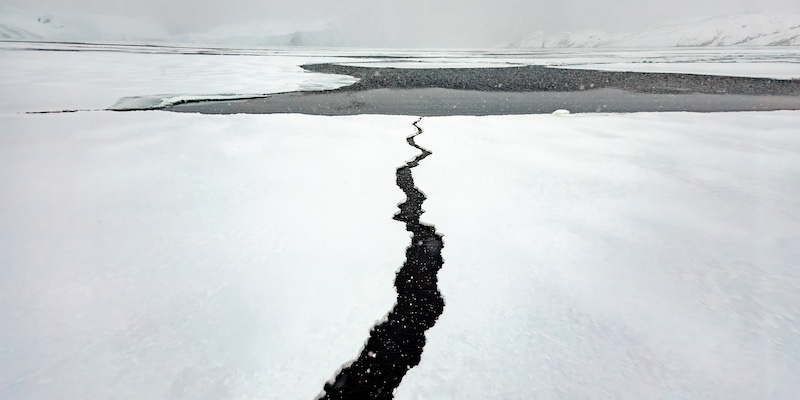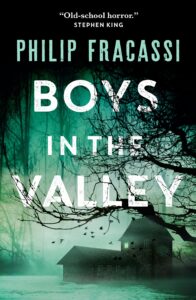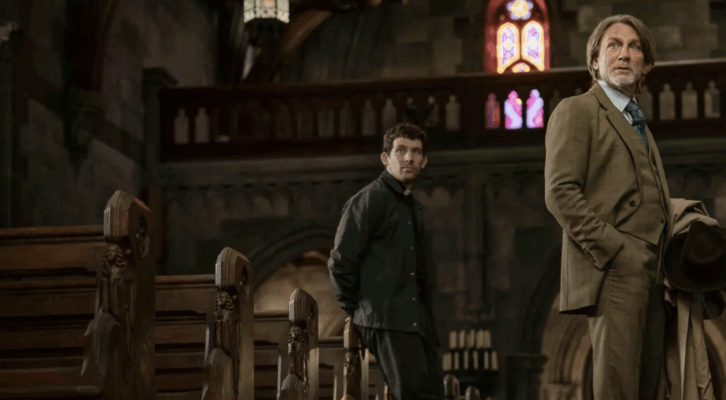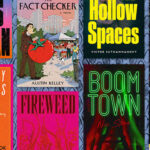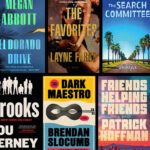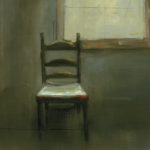For a moment, imagine the following:
You’re trapped.
You’re alone.
You’re in danger.
No one is coming to save you.
The goosebumps crawling on your arms, the sliver of ice sliding up your spine, is the physical response to the psychological fear of being in the situation outlined above.
God forbid it ever happens to you, or to any of us, in real life.
But when it comes to entertainment, to books and films and television shows, the trope of isolation is one of the most popular devices to deliver chills and thrills to consumers. After all, what could more terrifying than knowing that death is crawling toward you and there’s nowhere for you to go, nowhere to hide, no one to help you survive a slow, painful demise?
Or maybe it’s not death that’s tiptoeing silently up behind you. Maybe it’s something even worse than death, such as an existence of complete isolation that will leave you in a world of loneliness, despair. Madness.
There are many types of isolation, of course, and each particular trope carries its own flavor. Its own… unique types of fear.
You could be isolated at sea, for instance, fighting off circling sharks, or abandoned on a lifeboat. The last survivor of a sinking ship. It’s worth noting that nature can be a monster, as well, and the deep sea its most destructive form, not too dissimilar to that thing in your closet you worry about at night.
Think of movies such as The Abyss and Underwater, or books like Nick Cutter’s The Deep, all examples where you are trapped so far below the surface that even the slightest crack in a steel hull can mean the end. One of my own books, titled Sacculina, is structured around the idea that if something goes wrong on the sea—if something were to attack from below, for example—you might be left with no harbor to flee to, no lifeboat, no thrown rope. No hope. Other seafaring examples include everything from Jaws to Moby Dick.
If you’re lucky, maybe you escape the sea and make it to a desert island. Books like Lord of the Flies, films such as Cast Away or Robert Eggers’ The Lighthouse, or Stephen King’s infamous desert island story, “Survivor Type”, which takes isolation horror to gruesome extremes, are examples of what living in that type of isolated world can do to the human psyche; how it can slowly destroy your humanity and eat away (sometimes literally) at your will to live.
The same can be said for deep space. There’s no better example of this than the movie Alien, where being isolated means having to confront the thing, the dreaded monster, that shares your limited space. A roommate from hell. This deep space trope is often utilized in such films as Moon, or Stanislaw Lem’s classic novel, Solaris; two examples where the monster you fear might just be inside your own mind. Other books and films that explore the isolation of space include Andy Weir’s The Martian or the Alfonso Cuaron film Gravity.
Which brings us to the most fascinating and complex type of isolation horror: the psychological.
Perhaps no book or film has ever captured the psychological terrors of isolation more than the very first Twilight Zone episode, “Where is Everybody?”, in which a man finds himself alone in a small town where there are no people, and he has no memory of who he is or how he came to be there. A companion to this episode is arguably the most famous of all the classic Twilight Zone stories, “Time Enough to Last”, featuring Burgess Meredith and an infamous pair of broken eyeglasses.
A darker representation of psychological isolation is the classic Dalton Trumbo novel, and subsequent film (which was directed by Trumbo himself), Johnny Got His Gun. In Trumbo’s story, an American soldier awakes in a hospital bed only to slowly realize there’s nothing left of him but a sensory-free torso, having lost his limbs, along with his eyes, ears, mouth, and nose. He has only his dark, empty, isolated thoughts and fantasies to keep him company. Eventually, he can only pray for death to free him from his hellish prison.
A real-world example of what Trumbo’s soldier went through can be found in the autobiographical novel, The Diving Bell and the Butterfly, which is the memoir of Jean-Dominique Bauby, infamously dictated to a transcriber by simply blinking one eyelid. In 1995, Bauby fell into a mysterious coma and awoke completely paralyzed, only able to communicate by moving his left eye. While a more hopeful story than the fictional Johnny, Bauby puts the reader into his body, detailing the day-to-day life of what it’s like to be trapped inside yourself.
Arguably the most well-worn isolation trope, however, is the post-apocalyptic, or the dystopian. There are hundreds of examples of men and women (and robots) trapped on a version of Earth that has been torn apart and emptied of civilization by nuclear weapons, meteorites, or aliens. Stories utilizing this trope include everything from A Quiet Place to WALL-E to the Mad Max films. The most famous example of this trope, at least in horror literature, is likely Richard Matheson’s sci-fi classic, I Am Legend, which let the reader decide who the real monsters are.
Much like being surrounded by a war-torn world, endless water, deep space, or even a sun-scorched desert, the concept of being trapped within a vast landscape of inhuman environmental conditions, such as extreme cold, for example, has captured the imagination of many authors and filmmakers.
Inspired by the real-life history of infamous ships stuck in the ice, such as Shackleton’s Endurance, many of our most famous isolation stories have featured the horrors of a frozen wilderness. One of the most famous examples is John Carpenter’s classic horror film, The Thing, which was based on author John W. Campbell’s novella, Who Goes There? (which was also adapted into the 1951 sci-fi film, The Thing from Another World). Carpenter’s movie was less about the psychological dangers of being isolated, and more about entrapment with an unspeakable horror, from which there can be no escape. Like Alien, the monster is inside the room with you, and there’s nowhere to run. Nowhere to hide.
In The Terror, Dan Simmons took a similar setting, writing a fictional historical novel based on another famous set of ships lost in the early days of exploration—the HMS Erabus and its sister ship, the HMS Terror—and cleverly pitted his characters against both the monstrous desolation of the Canadian Arctic, as well as a literal monster that was keen on hunting and killing those trapped there. The savagery of Simmons’ novel, and eponymous television series, was realized by showing the multitude of ways isolation can attack mankind, whether it be psychological fear, starvation (and the horrors of cannibalism), or a monstrous polar bear with supernatural strength, size, and a thirst for human flesh.
Our fear of being alone in the cold has been well-documented in such fictions as Alma Katsu’s The Hunger, the real-life horrors of the Uruguayan rugby team in Alive and, perhaps most famously, in Stephen King’s classic novel (and Stanley Kubrick film of the same name), The Shining.
By isolating the story world, whether it be in outer space, the deep sea, the cold north, or inside your own head, authors and filmmakers have taken the narrative to a place where the borders are both finite and deadly, and escape is only possible through the aggressive and dangerous actions of those entrapped within.
It is within these confines that we as readers and viewers are joyously thrust, time and time again, as helpless bystanders to those desperately fighting to survive within these fictional cages crafted by the whims of an omniscient creator, within worlds that are simultaneously alien and all-too-human. It is in these characters, in their loneliness and despair, that we are allowed to see reflections of our own primal fears, which can be the most terrifying thing of all.
***

